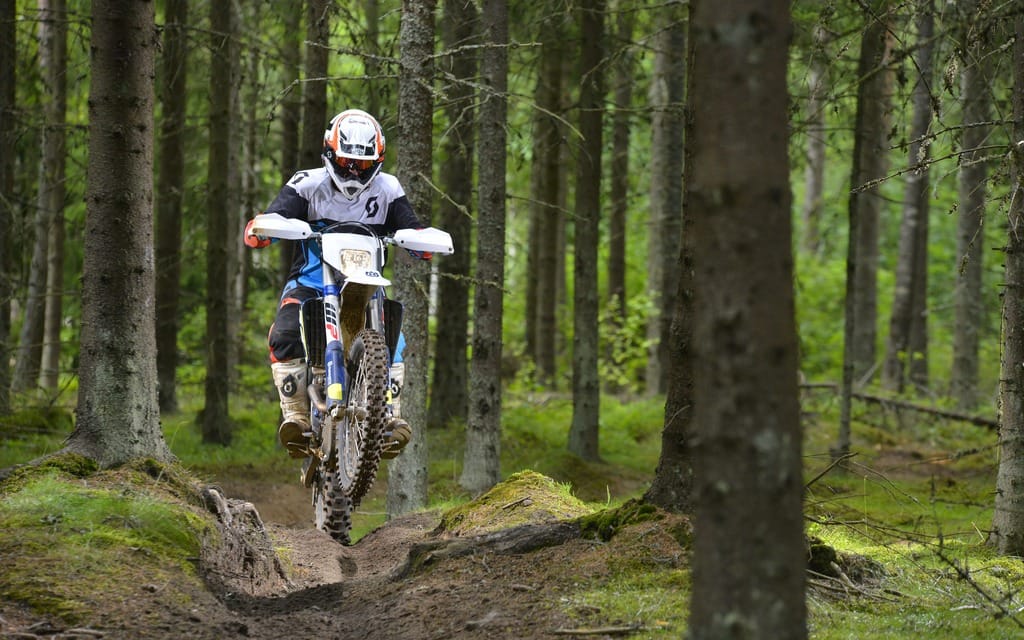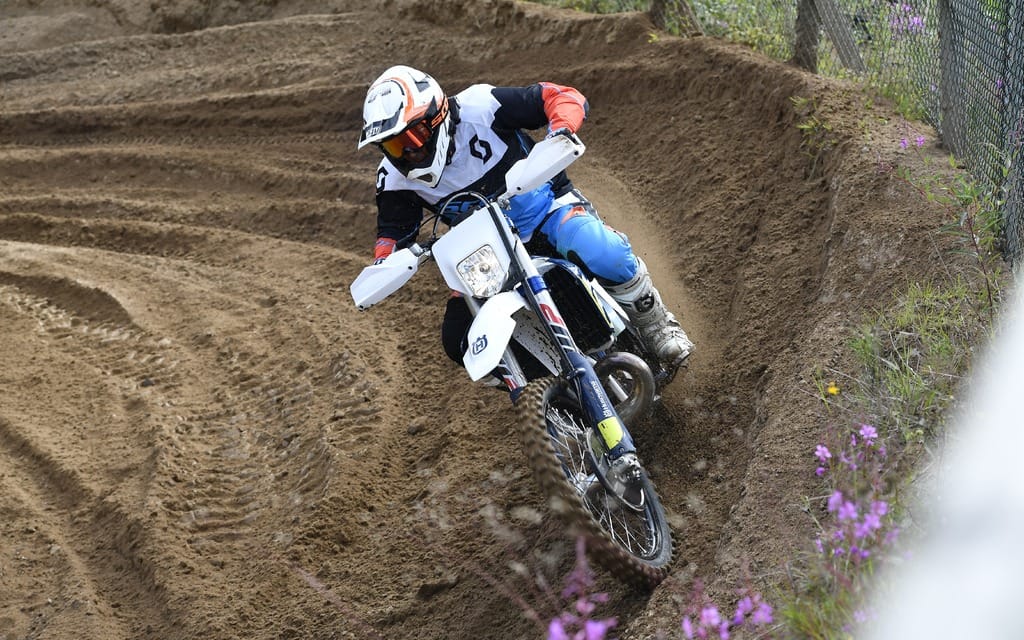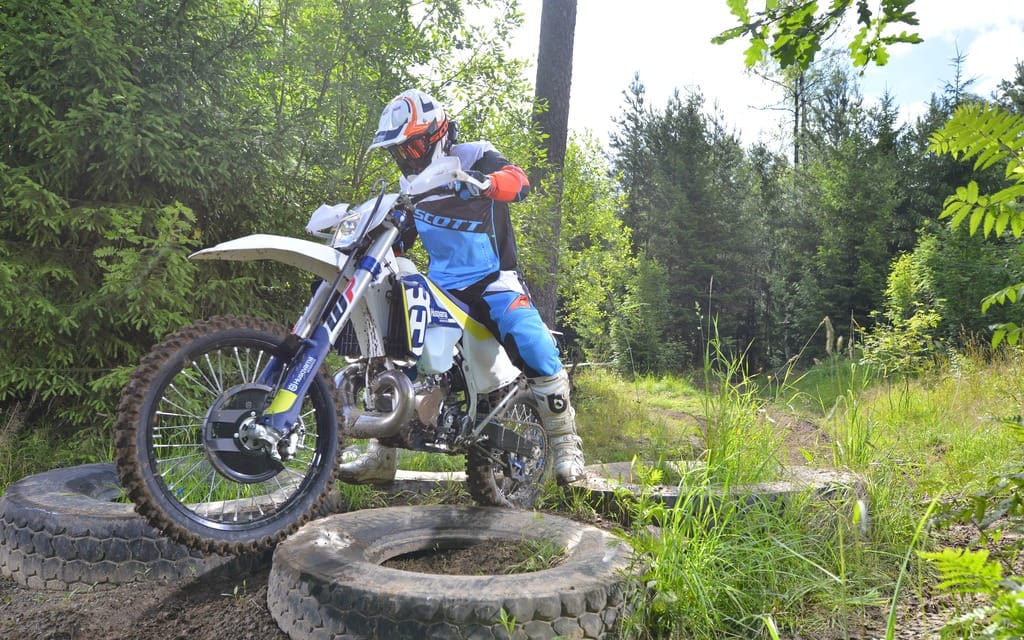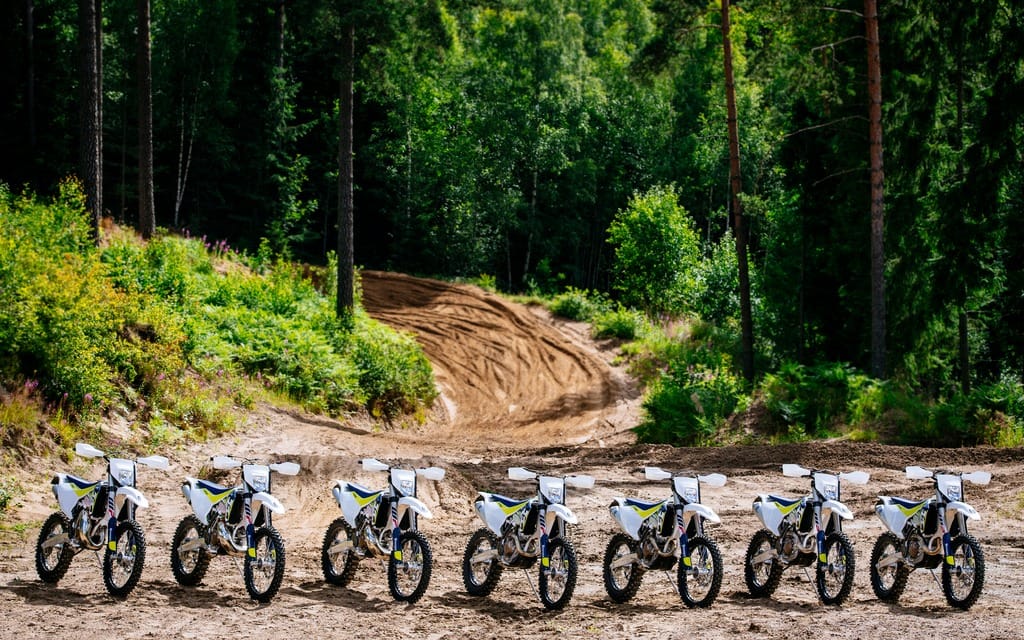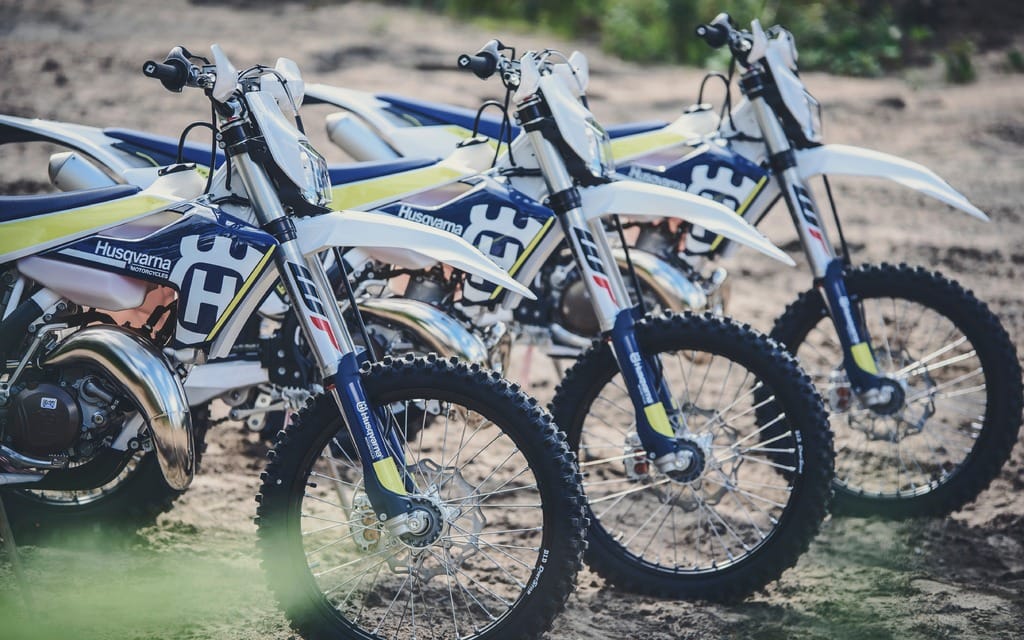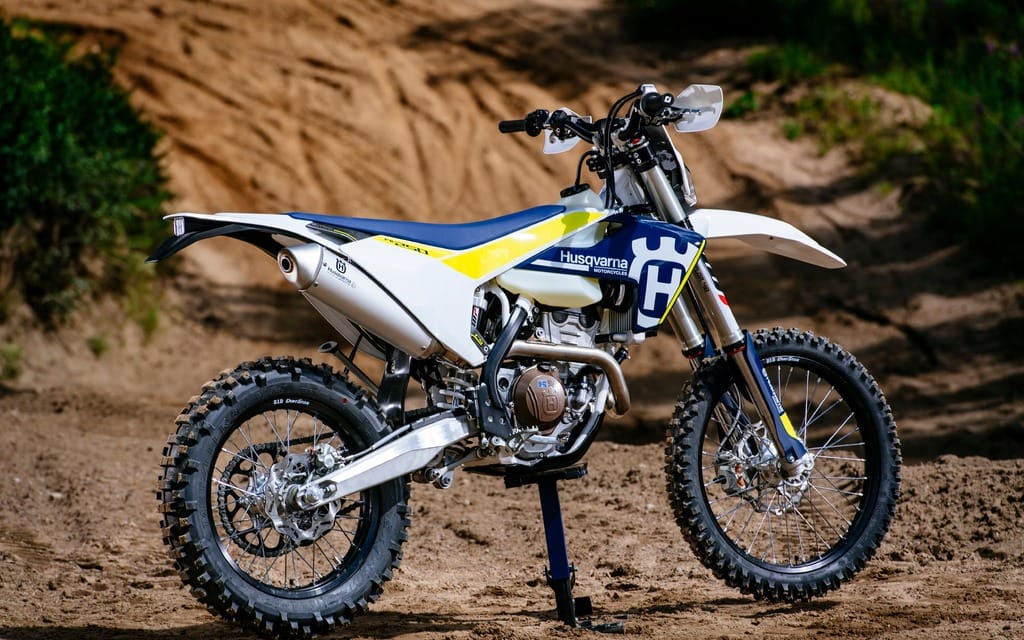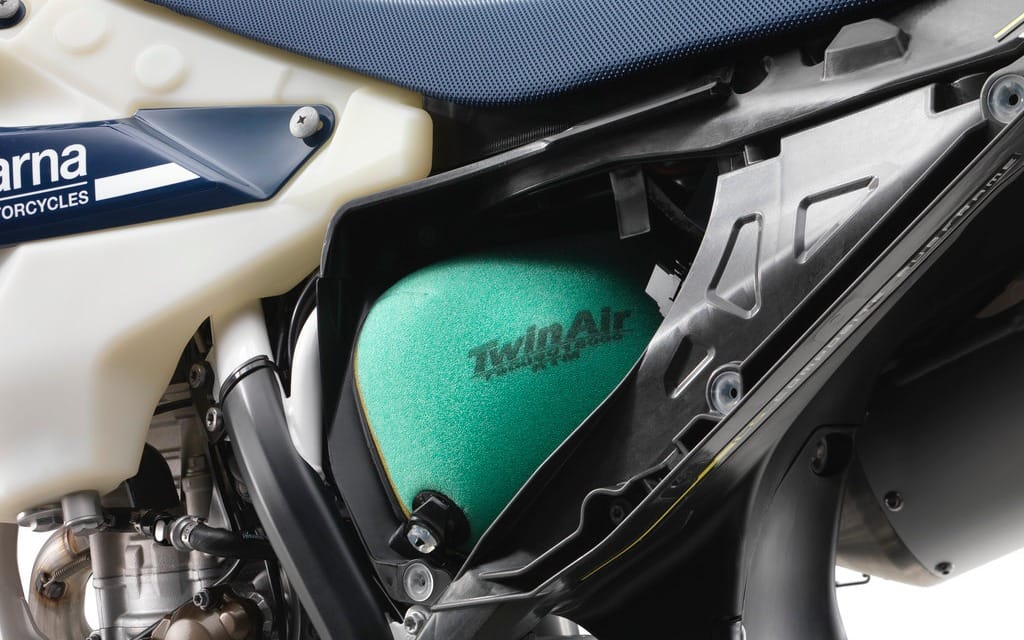Husqvarna finds more ways to revise for 2017
It’s early July and I’m standing in front of the original Husqvarna factory—now a museum—with 36 other journalists from around the world. We’ve all just flown in for a two-night stay in Jönköping, Sweden, for the presentation of the 2017 Husqvarna model launch. Not only is that little town an ideal place to practise using our Ö’s, but here we can learn some history about the cömpany.
Husqvarna has actually existed since 1689. It was originally a manufacturer of weapons for the Swiss crown. Over the centuries, the factories around this little town have addressed the production of guns, chain saws, lawn tractors, microwaves, stoves, ovens, bayonets and many other products. But we are talking about Husqvarna today for their rich history in enduro motorcycle production.
Despite the ups and downs of recent years, Husqvarna is still the world’s oldest existing motorcycle brand. The first motorcycle to come out of the factory was at the beginning of 1903, six months before the first Harley-Davidson was born in Milwaukee.
Since its acquisition by the KTM Group, the Swedish giant has worked hard to earn back his place as one of the best producers of off-road motorcycles. With this entirely new and revamped version of their line-up, Husqvarna motorcycles completes its return to the competitive market for enduro motorcycles in a convincing way.
For 2017, Husqvarna has returned to the drawing board to unveil a new generation of Enduro two-strokes and four-strokes. These bikes have been completely redefined in terms of control, agility, power, weight and technology. On these high-end motorcycles, premium components such as standard traction control, cast aluminum swingarm, hydraulic Magura clutch, Brembo brakes and composite carbon fibre subframes are considered the trademarks of Husqvarna.
Husqvarna completely reviewed the ergonomics of its models and worked hard on reducing the weight and size of each part that could be made lighter or more compact. These bikes are a blast to ride and they’ll give confidence to any rider thanks to excellent feedback in the handlebars. Why? I’ll explain in the following lines but mainly because of a fluid interaction between all the redesigned parts as well as keeping rider comfort and control in mind.
First, the frame was revised. Respecting a geometry similar to that of the Husqvarna enduro 2016 line-up, the 2017 frames feature a completely revised design and features: 0.6 kg lighter, six mm wider and lowered two mm, the new frame offers higher torsional rigidity for improved stability and agility, while longitudinal stiffness is reduced by 30 percent for better bump absorption and suspension functionality. New laterally mounted head-stays increase handling agility while reducing vibration. As standard, the frames are fitted with protectors and a new engine guard.
On this type of motorcycle the swingarm must be extremely strong yet lightweight. Husqvarna proposes a hollow swingarm made of cast aluminum, ensuring a minimum possible weight for optimum performance. In a sign that feedback from testers and users has been heard, Husqvarna engineers have specifically machined the rear axle so that the chain adjusting marks are visible from above for easy maintenance.
In Enduro, suspensions are essential and that is why the fork specialists were invited to talk to us. The WP Performance Systems engineers have spent a lot of time developing specific forks for enduro riding. They explained that compared to motocross riders, the enduro riders want their bikes to be comfortable and agile, with the ability to adjust the suspensions easily according to the type of terrain encountered. The WP XPlor 48 forks are completely new and they feature an open cartridge layout with a spring in each leg and split damping functions. Compression is adjusted from the left side and rebound on the right via easily reachable clickers situated on the top of the tubes. A standard adjuster allows for easy pre-load adjustment without the use of tools.
The new WP DCC linkage rear shock weighs only 3.7 kg and is 0.36 kg lighter than the previous version. A pressure balance inside the shock improves damping resulting in greater rider comfort and handling. This balance adjusts the pressure equally on top and below the damper, providing a more uniform reaction. It is also fully adjustable and matched to a linkage system with a specific geometry to deliver the best possible traction and absorption.
High quality Brembo calipers and controls combined with GSK discs deliver superior stopping power. They are powerful, precise and easy to modulate. Rear brake calipers have a 24 mm piston (26 mm on older models). In addition, the 10-mm-longer rear brake lever improves modulation and feel when braking.
Despite the requirements of the Husqvarna test track, I did not feel any excessive heat during my laps. This is probably due to the radiators manufactured with expertise by WP Performance Systems. Engineers used a high-strength aluminum combined with CFD (Computational Fluid Dynamics). This system channels air more effectively through the radiator and optimizes cooling in all conditions. The cooling system is integrated into the frame increasing heat dissipation by channeling coolant through the frame while eliminating the need for additional hoses. We were also told that the radiator protectors not only protect against flying debris but also dissipate all the energy from an impact around the radiator and into the frame. Cooling fans are fitted on all four-stroke models as standard equipment.
The 2017 enduro range we tested were fitted with Metzeler 6 Days Extreme tires but the U.S. and Canadian models will be fitted with TKC rubber on four-stroke models and Dunlops on two-strokes. This is to comply with EPA standards on noise emissions.
I had the opportunity to ride the FE450 and FE250 four-stroke models. The track was demanding. The first section was on a sandy surface of varying depth, with bumps, whoops, rocks, roots and ruts. Then we had a 15-minute section of singletrack with long sandy climbs, more rocks, mud, tree trunks and tight slalom sections between trees. We then had a section with tires, tree trunks and pipes where photos and video were shot. It was also a good spot to rest. This loop eventually led to a typical motocross track featuring long climbs and descents, jumps and a thick layer of sand.
Husqvarna’s four–stroke enduro range for 2017 was redesigned to become more powerful, lighter and more compact. Husqvarna engineers repositioned the main internal components in order to further enhance the performance and handling characteristics. Moreover, these motorcycles will require maintenance only every 135 hours of use.
I found the FE450 comfortable on the wide, sandy sections where the power of a 450 was welcome. In tight sections, the dimensions of the bike were of course a disadvantage but thanks to the relatively light weight of the machine, I was able to make it without working too hard. It was only in the motocross section that I found it a bit more difficult to handle and I returned to the pits completely sweaty.
The FE250 was my favorite. With my five-ten, 175-pound frame (I’ve recently lost 15 pounds thanks to a virus caught at another launch in Spain), I could have tons of fun with the nimble FE250. Handy, lightweight, with a torquey nature, this little gem is an ideal tool for playing in the woods. Of course if you have a long distance to cover between two trails, the 250 will certainly lack a bit of comfort and power but for a typical trail, this model is just truly fun.
Four-stroke enduros are equipped with a new adjustable engine map selection button on the handlebar. Optimized for easy operation, the selection button also activates a new start-up control functionality. The system analyzes the pilot gas input and engine revving. If the speed increases too quickly, the ECU records a loss of grip and reduces the level of power to the rear wheel to maximize traction in all conditions. I favoured the most powerful mode 2 on the FE250 while I was more comfortable with engine response in mode 1 on the FE450.
A new six-speed euduro specific gearbox is displayed on all four-strokes as well as a new speed sensor through which the engine management system (EMS) selects a specific engine map in each gear.
The new two-stroke Huskies are lighter, more compact and offer improved performance characteristics. I had the chance to test ride the TE300 and TX125.
During the presentation it was explained that these new engines are designed to improve mass centralization, enhance manageability, and reduce driver fatigue. This thanks to a new balancer shaft and crankshaft that significantly reduce vibration.
My first two-stroke was the TX 125. Obviously, this would not be the bike I would buy but I wanted to try it to see if it was still powerful enough for its small displacement. To my surprise I quickly felt a grin appear under my goggles. Besides being super agile, this little bike is comfortable and powerful enough for most lighter riders or less-experienced riders wanting a pleasant and efficient machine. Only in long, sandy hills could I feel the lack of power. In tight and technical sections, I enjoyed myself thoroughly with the small 125.
But my favourite was certainly the TE300. This bike is just great. The engine power is linear, torquey, and so easily modulable that some riders imagined an unlikely three-stroke engine. Indeed with this model what you lose in aggressiveness, you gain in torque to tackle any enduro trail. If I had to choose between all of these models, it would probably be the TE300 or FE350. The TE300 is demanding: you’d have to be in shape and more experienced than me in order to draw the full potential of that bike. After a few laps on the Swedish euduro course, I was again sweaty and exhausted but completely in love with the bike. I knew I’d find love in Sweden.
